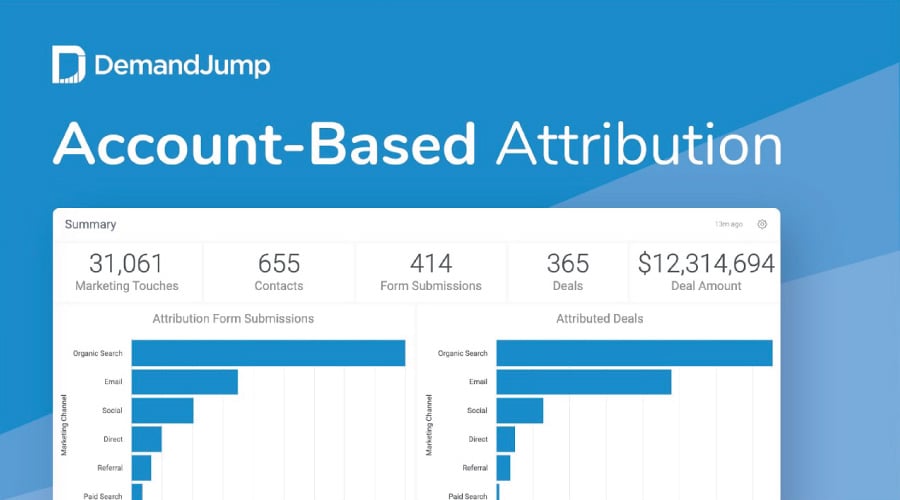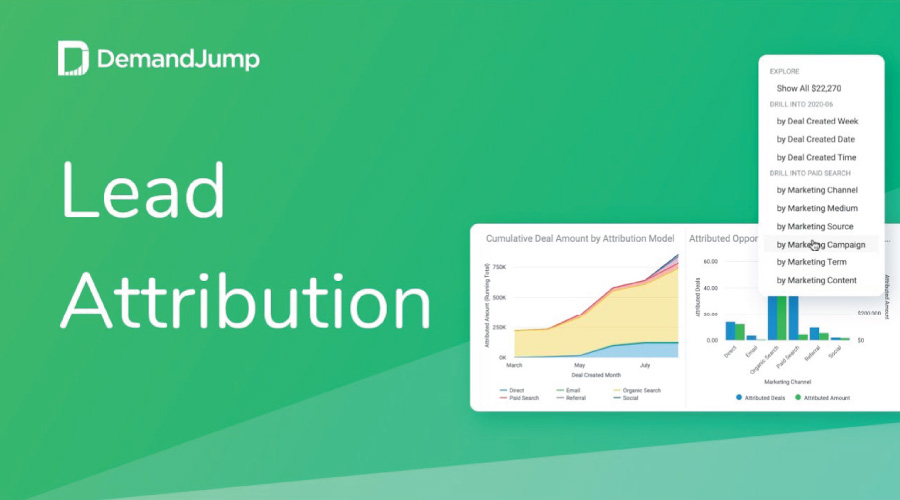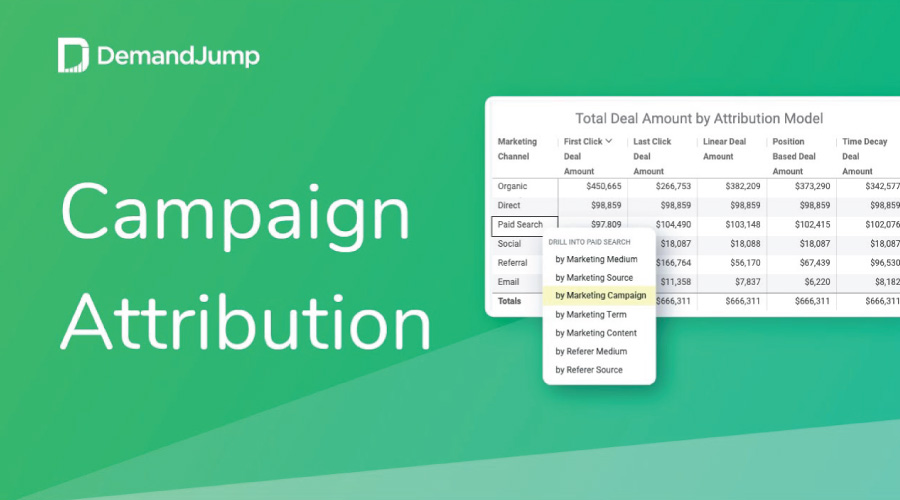Marketing Attribution
By embracing DemandJumps approach to SEO, we have been able to increase our organic rankings within just 2 weeks of implementing recommendations. This helped us see a 22% increase in organic search month-over-month.
Robert Jacko Vice President Digital Marketing @ Homage
DemandJump has become a crucial extension of our marketing team, providing game changing insights to fuel and propel all aspects of our digital marketing efforts. The DemandJump platform is a must have, we are seriously impressed.
Tim Lavinder Director of Ecommerce @ Hotsox
We used to spend hours looking for insights in dozens of tools and reports. Now we log into one place to find out what customers are doing and how to meet them where it matters most.
Zach Roop Digital Marketing Manager @ Dometic
We use DemandJump recommendations as our digital to-do list. We love going in and seeing the recommendations and knowing what to do next.
JoLynda Wilson Marketing Director @ IWC
Our Customers Love Attribution






Account-Based Attribution
Eliminate wasted time and spend. With DemandJump's automated account-based attribution
solution you will know with certainty which efforts are driving ROI.
Measure Your Marketing Performance
Find out which of your marketing efforts are making the biggest impact. See which channel drove consumers to you, the pages they visited, and all touchpoints along their path to purchase.
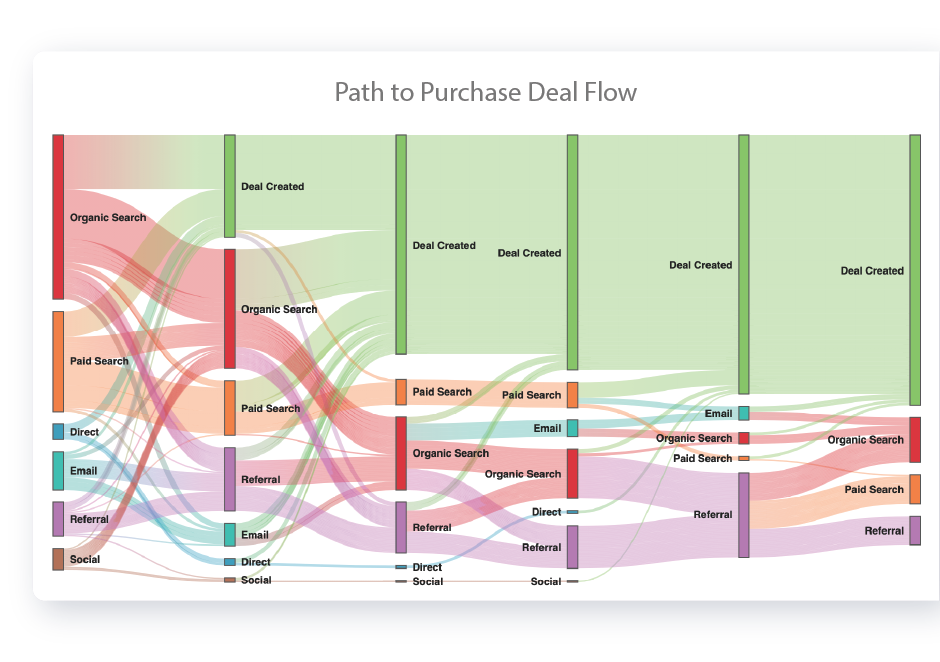
From Marketing Spend to Actual Pipeline Value
When a lead becomes a customer, you need to know which marketing channel or campaign should receive credit, and account-based attribution will give you the answers.
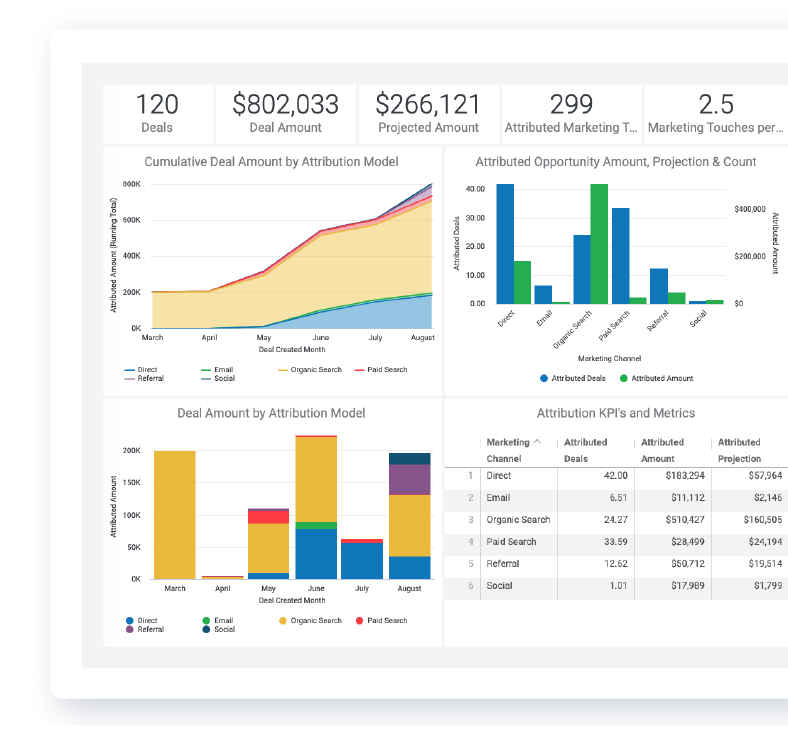
Organic & Paid Search Keyword Attribution
Beyond channel, campaign, and content attribution, you will finally see which organic and paid keywords are generating deal and opportunity revenue.
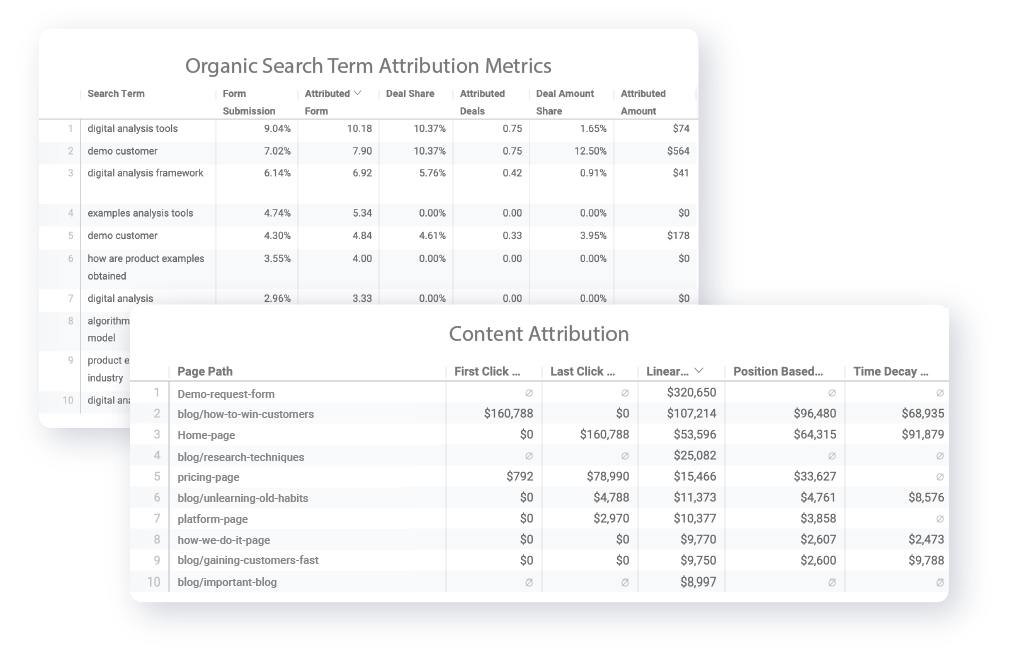
See a Demo of Attribution
Marketing overall is certainly not a new concept, but there are some distinct differences in marketing now versus the strategies and tactics used in previous decades. Understanding how best to reach your audience has always been a key challenge for marketers, and it’s one that continues to gain complexity in today's digital-based world. With marketing tactics such as advertising in magazines and newspapers becoming increasingly obsolete, marketers are reaching deep into their bag of tricks to find new market opportunities. Marketers have historically struggled to understand true consumer behavior and insights to inform their marketing campaigns.
As digital adoption rates increase and consumer tastes change at the speed of light, it's vital to have a solid understanding of digital marketing strategy and the frameworks that smart marketers utilize to impact revenue and drive new business opportunities.
How Is Digital Marketing Different from Traditional Marketing?
Digital marketing, also known as eMarketing or internet marketing, has some distinct differences from traditional marketing methods. Marketing has long been a way to interrupt consumers - capturing their attention through massive billboards, television and radio ads, postcards, newspaper ads and more. These disruptive influences are most successful when marketers are able to present their stories in a way that is compelling for consumers as a way to solve a problem. Otherwise, these marketing tactics were simply considered a frustrating diversion from what the consumer was attempting to accomplish.
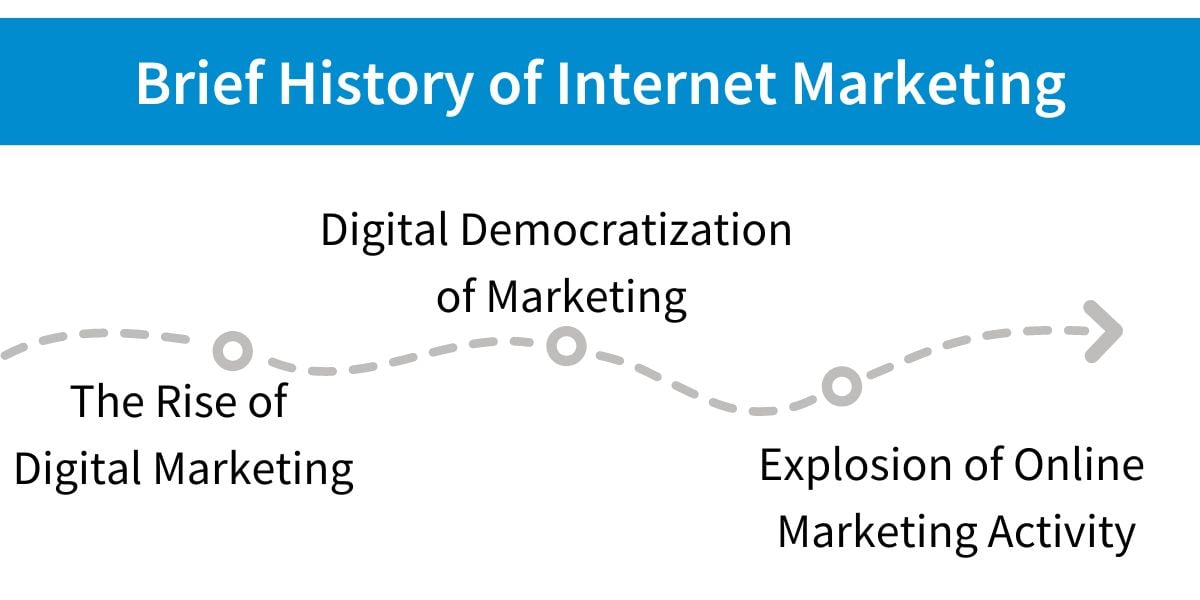
The Rise of Digital Marketing
With Digital Marketing, the paradigm shifts from talking "at" consumers to speaking "with" them, creating a two-way conversation that allows consumers to have input into the ongoing dialog with brands. Technology has provided a vast range of capabilities that brands can take advantage of, including everything from social media engagement to educational media. Printed advertisements can be traced back to the early 1400s when Gutenburg invented moveable type.
While magazines didn't emerge until the 1730s, posters and billboards rose to prevalence in the landscape throughout this era and through to the 1940s. Radio and television advertisements dominated consumer minds through 1970 when the first telemarketing began to enter the scene. It wasn't until 1994 and the rise of the digital age that marketing opportunities for businesses truly began to transform from marketing to "e" or "electronic" marketing.
Digital Democratization of Marketing
As the widespread use of the internet and digital devices such as cell phones began to soar in the late 1990s and early 2000s, marketers knew that this was a tremendous era of opportunity to reach new audiences more effectively and cost-efficiently than ever before. Avenues of reaching millions that were previously only open to companies that had millions to spend on television or radio advertising suddenly existed on the internet.
Companies that had a modest marketing budget were able to dramatically grow their audiences through the use of email marketing and simply by creating educational content that was appealing to search engines and website visitors alike. By 2003, it was obvious that email spam was becoming a problem, which quickly shifted the focus to social media outreach.
Explosion of Online Marketing Activity
During the early 2000s, online sales began to skyrocket as consumers gained greater trust in online retailers and the brands they were selling. The interest in analytics continued to grow, allowing marketers to identify market opportunities and react to them more quickly than ever before. By 2010, 90% of U.S. households had a mobile phone and Google began to integrate information from their Google+ and other social media platforms into their search engine results.
Fast-forward to today, and marketers have near-limitless options for reaching their target audiences through social media, blogs, online advertising, mobile advertising and more. With hundreds of millions of individuals having immediate access to smartphones, laptops, desktops, tablets -- and 88% of commerce happening online -- the marketing toolkit continues to evolve.
With all these diverse marketing options, how can marketers drill down and identify specific opportunities that will increase awareness and sales?
Identifying Marketing Opportunities
It may be difficult to define discrete steps that all marketers use in order to identify opportunities. Some marketers are able to look across the competitive landscape and the commercial ventures and quickly match the core competencies of their organization to the needs of their audience. While it might be nice to think that "gut instinct" is enough to help marketers identify the right opportunities, the reality is that it takes a great deal of analysis and study before determining the best marketing opportunities for businesses.
Identifying unmet needs in a particular user group can entail something simple, such as a friend or family member mentioning that they need something and are unable to find it. But this kind of idea should always be validated by market research or market intelligence. It could also be much more complex, as you review your current inventory of products and services and match them to your competitors -- looking for some corner where your company can be competitive and gain market share.
Finding these business opportunities often requires deep insight into the work that your competitors are doing. Finding and aggregating this information can be difficult and time-consuming without the right tools to support your analysis, so it can help to save time by automating this process with competitor analysis tools.
Assessing Marketing Opportunities
Recognizing a market opportunity is the first step, but then you need to assess the potential value of the market. One of the current issues in digital marketing is that it can be challenging to find all of your potential competitors and also find the scale of demand for a particular product and service. With thousands of websites popping up on a weekly basis, the barrier to entry for some products and services is extremely low. This can also mean that there are many low-cost providers in the marketplace driving down the price of valuable services that your business can offer.
Not only do you need to have an audience that is interested in what you have to offer, but they also have to assign a measure of value to your products or services. This helps ensure that you are not simply buying market share by dropping your cost below a level that is sustainable over time. There are several well-developed steps that marketers take, either formally or informally, as they consider how to determine market opportunity.
The final step in assessing internet marketing business opportunities is creating a digital marketing framework that you can use to begin building your marketing strategy.
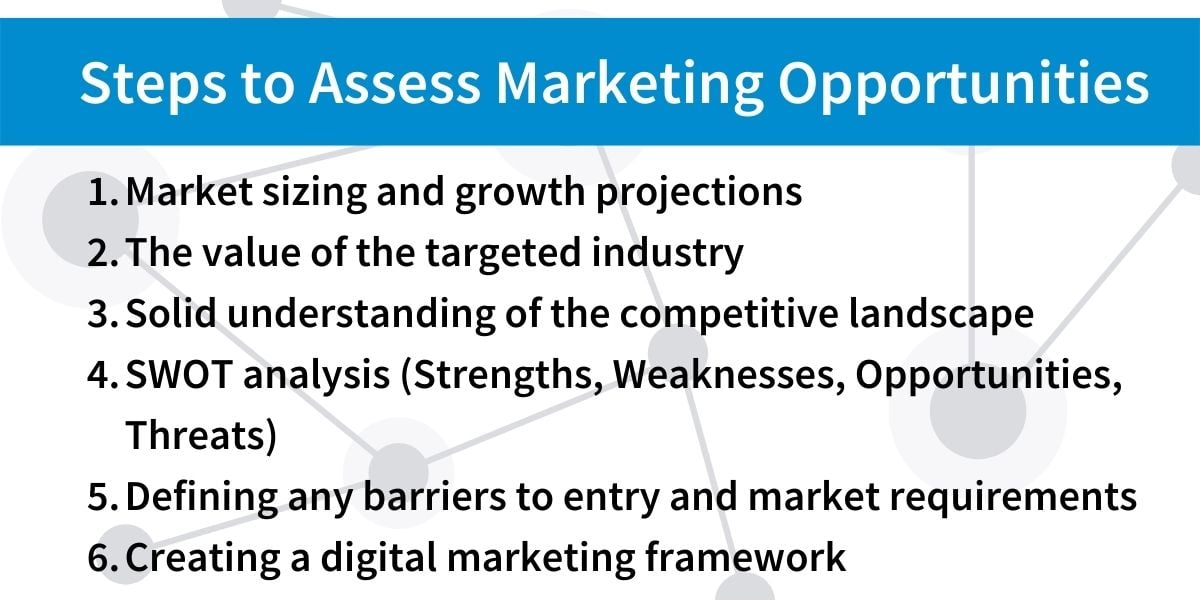
Building a Digital Marketing Strategy and Defining Tactics
Searching the internet for a digital marketing plan template can be an exercise in frustration. There are plenty of companies looking for ways to sell you a marketing plan template. Even the most exceptional pre-built plan is unlikely to address the specific needs of your unique product, service or audience. The best solution is to utilize a well-understood framework for your eMarketing plan, such as starting with a RACE framework template. RACE, sometimes also called (p)RACE is a methodology used by many marketers that also has a more familiar name: a sales funnel. The term stands for:
- (p): The 'Plan' stage includes creating an agile and strategic approach to internet marketing that allows you to plan, manage and optimize your marketing campaigns to achieve real-world results.
- R: In the first official phase of the RACE framework, the R stands for 'Reach', which has historically been referred to as the exploration stage of the buyer journey. In this top of the sales funnel activity, you are working to define content that will entice readers via search engines, social networks, external publishers and blog posts.
- A: Are you ready to Act? 'Act' is the second phase in the RACE framework and involves activating your content through your website, blog, social community and other interactive tools. Buyers are getting ready to make a decision during this stage and are looking for helpful, relevant information.
- C: For the 'Convert' stage, it's all about the purchase. You are focused on eCommerce activities, ensuring that your pricing and promotion are tied tightly together and are hitting on all cylinders. This is the stage when much of your content and other marketing tactics come to fruition while remarketing tactics and automation help keep your sales funnel overflowing for the future.
- E: During the final stage, you want to 'Engage' your customers to deepen their relationship with your brand. Traditionally considered the advocacy stage of a buyer's journey, you encourage current customers to return and share their love of your brand with friends across social networking platforms and with repeat business.
With the (p)RACE digital marketing framework, there are no steps that are extraneous or skippable if you want your marketing to be successful. Speaking of which, how do we define success? Here is a sprinkling of key KPIs (Key Performance Indicators, or metrics) that you will want to pay attention to at each stage of your internet marketing journey.
|
Framework |
Buyer Stage |
Key KPIs to Measure |
|
(p) Plan |
Market Assessment & Planning |
Size of the market and opportunity scale |
|
(R) Reach |
Exploration |
Unique website visitors, Value per visit, Social fans or followers |
|
(A) Act |
Decision Making |
Number of leads and/or Lead conversion rate, Period of time spent on your website, Social engagement such as shares or video views |
|
(C) Convert |
Purchase |
Cross-channel sales, Attributions, Total revenue and Profit by channel and Average order value |
|
(E) Engage |
Advocacy |
Lifetime Value of the Customer (LVC), Quantity of repeat purchases, Customer satisfaction, Net Promoter Scores (NPS) and Online ratings |
After you’ve planned for and rolled out a funnel funnel marketing campaign, you’ll need to understand what’s working and what’s not. In order to do this, a good marketing attribution solution is essential to understand what’s really bringing in new business, and how. Marketing attribution is a way of quantifying the impact of each marketing channel you are using on the different stages of the marketing funnel. In order to really understand your marketing performance holistically, you’ll want to consider a cross-channel analytics platform that gives you and your teams the whole story, instead of relying on siloed marketing channel data which can often have blindspots.
Defining Your Digital Marketing Strategy
At each phase of your digital marketing strategy, you will be defining tactics that will help achieve the stated business goals of your project as measured in your key KPIs. Some of the questions you will answer as you drill down into your marketing plan include:
- What are some of the specific digital advertising opportunities I want to pursue?
- Which social media channel or channels offer the best opportunities to micro-target messaging to my audience?
- Should I invest in SEO (Search Engine Optimization) for my website? This often includes going through the website and ensuring that you have high-quality content available that is targeting keywords that are important for your brand.
- What level of SEM (Search Engine Marketing) such as Google AdWords or Bing advertising should be a part of the mix?
- Do we need to define a blogging strategy, create whitepapers or eBooks or email marketing strategies?
- What type of landing pages and lead capture forms will we need?
- Should we advertise on specific mobile ad networks to reach our target audience?
- Will influencer marketing add value to my brand?
As you're considering all the various options for eMarketing, it's vital to tie your efforts together with any more traditional advertising and marketing opportunities, such as postcards and mailers and print advertising. Creating a holistic strategy that captures all of the tactics that you're utilizing to drive sales will help ensure that you're more effective with attributing sales to the correct tactics in the future. Without this final step of measuring key KPIs by channel, you may find that you're overspending in an area that isn't driving results -- and not putting enough emphasis on a channel that is outperforming expectations.
Challenges of Digital Marketing
With digital marketing, the continual flow of reinvention is required, simply because your audience's nature is quite fickle (and so is the technology you're using!). What works extremely well one week could suddenly bomb, something that anyone who has marketed extensively on Facebook can attest to. When digital platforms such as search engines and social media advertisers suddenly change their algorithms, you might find that the ad costing you $0.02 per engagement last week is now skyrocketing to more than $5 per engagement today. Without keeping a close track of your KPIs, you may find that you're not maximizing your advertising spend or getting the value that you expect from your digital marketing strategy.

The opportunities and challenges of modern marketing are myriad, which is what keeps many internet marketers engaged and always looking for new opportunities to grow sales, reduce acquisition cost, and encourage current customers to become raving advocates for a brand. There is one area where nearly all internet marketers struggle, and that is with being overwhelmed with the options that are available. When you look across the eMarketing landscape, there are so many options that it can be easy to stick with the comfortable ones for each campaign. While this does limit the risk that you might encounter with having a poorly-performing campaign, you could also be significantly undercutting your sales opportunity. Taking a measured risk with digital advertising can be much less expensive than marketers are used to, particularly because you can often make quick shifts if you see that a tactic isn't resonating with your audience as expected.
Creating a cohesive overview of your digital marketing strategy and tactics starts with having a firm grasp on the key KPIs that will drive important business results. At DemandJump, we have tools in place that allow you to look across both your industry and the competitive landscape, to ensure that you clearly see the available opportunities -- and areas to avoid where there is too much competition or limited demand. Get a jump on the competition when you look closely at your customer journey maps and automate market research with DemandJump, Contact our team to request a free demo and you will quickly see the opportunities that you might be missing with your current internet marketing strategies.
Marketing Attribution Resources
Marketing AttributionAttribution Tracking
B2B Marketing Attribution
Hubspot Attribution
Marketing Campaign Influence
Mobile Attribution
Multi Touch Attribution
Offline Attribution
Sales Forecasting
Sales Opportunity Attribution
The Future of Data-Driven Marketing
Opportunities of Internet Marketing
Other Resources
Channel Optimization
Consumer Behavior
Consumer Insights
Consumer Insights and Analytics
Competitor Analysis Tools
Content Marketing
Content Strategy
Cross-Channel Analytics
Customer Insight Research Techniques
Customer Journey Map
Market Intelligence
Marketing Analytics Techniques
Market Research
Marketing Attribution
Opportunities of Internet Marketing
Types of Consumer Insights



